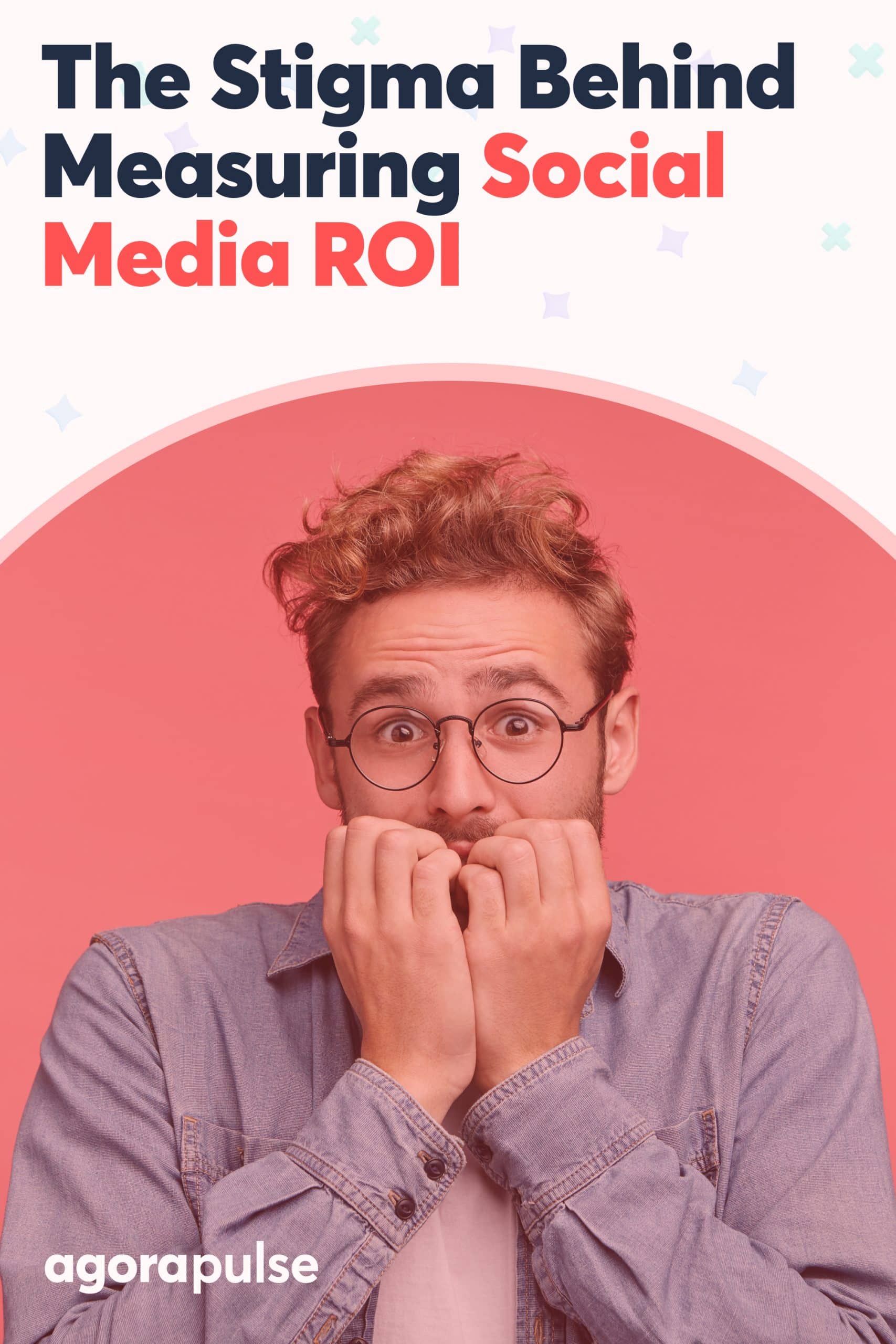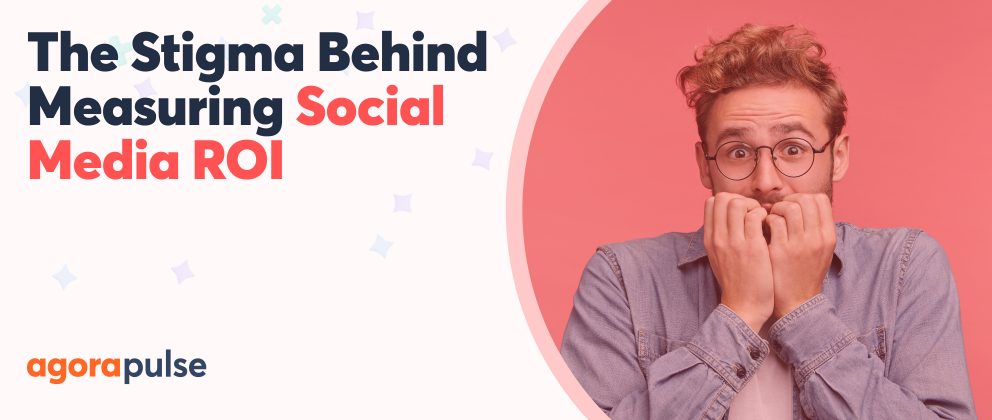Everyone knows that social media marketing is a must-have marketing tactic. But, in a tightening economy, big question marks about measuring social media ROI are starting to gather over the true value of social media activity:
- How much revenue did that post bring in?
- You spent $X dollars creating that reel, so how many conversions did we get?
- Yes, I can see the increase in likes, shares, and retweets, but what does that mean in terms of sales and, more importantly, my bottom line?
As a CMO, the buck stops with you. It’s your job to provide answers to these questions.
But proving Social Media ROI can be difficult and time-consuming. And there’s a nagging worry about the numbers. Does your social media marketing activity really bring in the dollar like you’re telling the board it does?
Isn’t it far quicker, easier, and safer to track and report the pretty little vanity metrics and prove your and your team’s worth by showing increases in likes, shares, retweets, and comments?
Of course, we know that there’s value in using metrics like these to show the increase in engagement, community management, and brand awareness. But vanity metrics aren’t tangible.
To be frank, the board doesn’t care about that stuff. They want cold, hard numbers that positively demonstrate how the time and money you spend on your social media marketing activity is impacting their bottom line. Is it driving sales: Yes or no?
Until you start proving the real value of your social media marketing, you’ll have a number over your head and a warrant to bring you in for questioning every quarter.
If money is tight, resources are scarce, and you can’t show the number of conversions your social media team is bringing in, whose budget is gonna get cut? Clue: It won’t be Sales.
Why Is It So Hard to Prove Social Media ROI?
Here are three common barriers to measuring social media ROI and proof that 70% of CMOs prefer to focus on ineffective vanity metrics instead of good, solid ROI data.
Social Media ROI barrier #1: We’ve always done it this way because it’s easier and vanity metrics DO tell us stuff
As a CMO, you’re under immense pressure to track, measure, analyze, and report on everything you do on every marketing channel you utilize from email marketing to TV ads. And it’s a lot, right?
So, it’s understandable that you might default to collecting data and reporting on metrics that are easy to obtain and even easier to explain, regardless of how effective they are. This is especially true in regard to social media marketing.
It’s just too easy to look at the follower numbers and qualitatively talk about the positive impact that this is likely to have had on brand awareness. The operative word here is likely. The board doesn’t want likely. They want definitely.
Social Media ROI barrier #2: It’s complicated to set up tracking in Google Analytics and decipher the results
Setting up Google Analytics so that every social media link that you publish, whether it’s in a post or a message, tracks every user that clicks on the link, down the funnel to see where they drop out or if they become a sale is time-consuming, complicated, and prone to error.
Plus, once you get the data, there’s a lot. It’s confusing, it’s overwhelming. Isn’t it just far easier to just check each social media platform, individually, and collect data on how many likes and shares your posts are getting?
Social Media ROI barrier #3: The results are always skewed, so what’s the point?
Those who do venture down the Google Analytics route, in a bid to get worthwhile data that proves Social Media ROI, can often unknowingly create UTMs with errors or forget to add UTMs to every single link that they publish.
That makes the data they collect inaccurate and completely unusable, as it’s filled with holes. This raises doubts and encourages more questions from the board. So again, isn’t it just easier to stick with the vanity metrics?
If any, or all of these scenarios resonate, keep reading to find out how to overcome the stigma surrounding Social Media ROI and start giving the board the cold, hard numbers they want.
3 Things to Help You Get Over the Social Media ROI Stigma
When proving Social Media ROI, we’ve established that, although they’re easy to track, understand, and report on, vanity metrics are overused but massively overrated.
There is no linear relationship between the number of fans, followers, and engagements, and the number of conversions you get. Just because you have 55,000 followers, doesn’t mean you’ll get 55,000 sales.
But it doesn’t have to be impossible or even difficult to determine the ROI from your social media activities.
Here are three key things you must do if you’re serious about swapping useless vanity metrics for useful Social Media ROI data.
1. Set benchmarks
Before you can measure how much revenue you’re bringing into the business and how much value you’re adding with your social media marketing efforts, you need to know where you’re starting from.
You need a benchmark for how many demo requests, form clicks, website visits, and conversions you’re bringing in through social.
To get that benchmark:
- Pull current website analytics, such as the number of visitors, referral links, page dwell times, bounce rates, etc.
- Make sure you know what your core KPIs are and that they align with what the board is expecting and wanting to see.
- Record the numbers you already have (i.e., the number of leads or conversions).
2. Use Google Analytics
There’s no way around it. Connecting your website to Google Analytics, adding UTMs to links that you publish in your content, and setting up conversion goals is the only way you can track customer journeys through the funnel and establish which social media platforms and activity is sending the most traffic to your site and converting visitors into leads or sales.
People don’t buy a product or a service after seeing just one, single post. It might take several posts before they end up as a customer. Or,\ that one, single social post might have been where that customer started their journey with your company, making it a key contributor to the sale.
You need to know what steps each user went through before they converted. You must understand how all the individual moving parts in your social media and marketing strategy contributed to that user becoming a customer.
You’ve got to track each small action, at each stage of the buyer’s journey, from research through to purchase.
However, Google Analytics may be one of the reasons you don’t track Social Media ROI right now. It can be time-consuming and complicated to set up, and you can’t always rely on the results because of easy-to-make mistakes with the setup and management of the data.
This next point will remove all these issues …
3. Invest in a quality social media management platform
I know what you’re thinking: I’m biased because I work for Agorapulse which is a “quality social media management platform.”
But here’s the thing. Agorapulse is the ONLY social media management tool that has a built-in ROI tool that accurately measures Social Media ROI.
As long as you have benchmarks in place and have a Google Analytics account, you can easily prove Social Media ROI with Agorapulse.
Let me explain.
If you connect your Agorapulse account to your Google Analytics one, Agorapulse will automatically create and add UTMs to any link that you publish through the social media management platform.
You. Don’t. Have. To. Lift. A. Finger.
Agorapulse does it all for you. No more UTM-shaped errors, confusion, or time-wasting.
From within Agorapulse, providing you’ve set benchmarks and created conversion goals in Google Analytics (which is super-simple to do), you’ll be able to see exactly which social media activities are driving your traffic, leads, and conversions and what the ROI for each activity is.
No more fumbling your way around Google Analytics! All the ROI data you need is right there, in one single, easy-to-use place.
What’s even better, is that when it’s time to present your figures to the board, you can build customized, professional ROI reports based on the Social Media ROI data you’ve captured from within Agorapulse.
“This is truly a game changer and provides you the easiest way to calculate your social ROI according to your social media traffic.” – Neil Schaffer, Social Media ROI: The EASIEST Way to Calculate the Impact of Social Media on Your Business
What We’ve Learned About Measuring Social Media ROI
Measuring Social Media ROI is like driving a car. You have a dashboard with lights, toggles, gauges, and metrics. But the most important gadget to have in front of you is your GPS screen. The GPS screen shows you where you are now, which direction you’re heading in, where you want to be, and tells you how to get there (adapted from a Jeremiah Owyang quote).
And it also keeps the passengers in your car nice, happy, and quiet.
If you fancy taking Agorapulse and its Social Media ROI tool for a spin, sign up for a free trial (no credit card needed) or book a free demo with our sales team.






